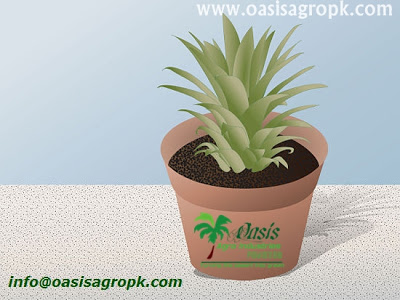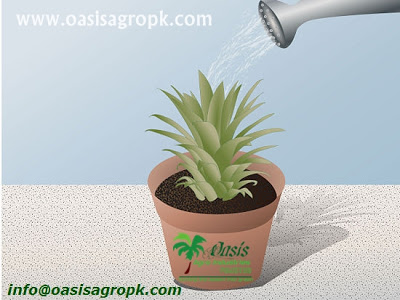Agriculture









- Bromeliaceae
BromeliaceaeThe family Bromeliaceae comprises a group of perennial, monocotyledon herbs or trees that often age slowly. Important ornamentals (called bromeliads) as well as sources of food and medicines, Bromeliaceae have substantial economic value and...
- Hydroponics Basics ? A Guide To Your First Hydroponic System
By Justyn HornorHydroponic gardening is so much easier than you?d think! My goal here is to make the process of hydroponics as easy as possible ? too many people are scared of trying it. They?re intimidated, or they don?t know how much it will cost, possibly....
- Pineapple Morphology
Ananas comosusis a herbaceous perennial of the Liliopsidae (monocotyledonous), whose terminal inflorescence gives origin to a multiple fruit known as sorose. After maturation of the first fruit, the plant develops new shoots from axillary buds, so producing...
- Summery Treats: Beat The Heat With Some Refreshing And Tantalising Drinks
July 08, 2013 Tanveer Khadim Ah, the scorching heat of summer is here. It may be hot and humid, but one can?t deny that it?s also the season of delicious, juicy fruits and vegetables. Watermelon, succulent mangoes, seedy falsa berries ? you name it! All...
- Pineapple Fruit - Uses & Benifits
Pineapple is one of those foods that is still safe to eat. Meet a good juicy ripe pineapple is a sweet and envy than any chocolate bar. Besides being a delicious meal, there are many health benefits of pineapple. The benefits of pineapple are all...
Agriculture
How to Grow a Pineapple
Pineapple is one of the world's most unique and exotic tropical fruits, yet it is possible to grow it in a temperate zone under controlled conditions; with the most difficult part of the process just getting it rooted. Although you may not be able to grow as large a plant as is grown on a plantation in Hawaii, the following information should enable you to grow a healthy, attractive pineapple for your home. And it makes a fun family project for the kids!
With some patience, you can even grow a new pineapple from this plant. It takes about two to three years, though, and even then some plants are difficult to get to produce new fruit. However, I've searched the web and have provided below the best techniques for improving your odds of harvesting a ripe & delicious pineapple that will fill your house with its aroma. To make full-sized pineapples, the plant will ultimately need to get about six feet across and six feet tall. But, you can grow it as an interesting indoor plant and even get it to produce fruit (albeit small fruit) without letting it take over the living room :-)
Here is some interesting trivia about your pineapple. The pineapple is a member of the bromeliad family. As such it is related to Spanish moss and some interesting ornamental plants sold in many nurseries. These ornamentals are interesting in that they absorb water and nutrients from a water-tight reservoir formed where the leaves come together, or by interesting absorptive hairs which cover the Spanish moss and similar bromeliads, allowing them to draw water and nutrients from the fog and dust in the air. The pineapple, however, uses its roots like houseplants with which you are familiar and should be easy to grow if you treat it like a normal houseplant that needs bright light.
There seems to be no definitive site given for the original discovery of pineapples in the new world. It is thought they may have originated in the northeastern area of South America, near what is now known today as Guiana. There are several different pineapples besides the grocery store variety. For example, an Ananas nana is one of the smallest, about eighteen inches tall and grows in a six-inch pot. One of the showiest pineapples is Ananas bracteatus, tricolor. When mature it is about four to five feet in diameter and about the same height. It flushes a brilliant pink at the base of its white and green striped leaves. It also has pink recurved spines so caution must be exercised when working around the plant. Our commercial pineapple, Ananas cosmos, var. Smooth Cayene is the one most people are familiar with, but only in a can, as a fruit.
Things You'll Need
- Pineapple
- Planting pot
- Soil
- Water
- Glass
- Fertilizer
- Time
- Sunlight
Step 1:
Obtain a pineapple with firm, green leaves (not yellow or brown).

The fruit skin should be golden brown. Make sure it's not overripe by gently tugging on the leaves. If it pops right off, the pineapple is too ripe for this purpose. Make sure that there are no scale insects (they look like small grayish spots) at the base of the leaves. Go to wherever you like buying fruit from, whether it be a supermarket, farmers market, or from a guy selling fruit on the side of the road. Buy a nice looking pineapple. Make sure it's nice and ripe. Take the fruit home, and move on to the next step..
Step 2
Cut off the crown and strip some of the lower leaves so that the stem is exposed.

Trim any fruit flesh without damaging the stem (that flesh could rot your plant later). Take your pineapple home with you. Rinse the fruit off, then place it on it's side on a cutting board. Take a knife and cut off the leafy top part of the pineapple, along with an inch or two of the pineapple's meat. Set this aside while you proceed to eat the rest of the pineapple.
Step 3
Turn it upside down and let it dry for about a week so that the cut end and the leaf scars can harden

? Take off leaves
Pull off the outer leaves of the stem, leaving about six big leaves near the center of the pineapple plus the small leaves that are in the middle. Put the crown aside for a few days to dry out.
Step 4
Place in water

Put the crown in a glass of water until the roots start growing out.
Put the top in a small bowl filled with about a half inch of water. The bottom of the crown should be submerged, but the water should not touch the leaves.
Step 5
After two or three weeks, the crown should be sprouting roots, meaning it?s ready to be planted. Fill a container that drains with potting soil, and plant the crown.

Plant the crown in an 6-inch (15.2 cm) pot using light garden soil with a 30% blend of organic matter. Press the soil firmly around the base of the crown without getting any soil on the leaves. Place the bowl in a sunny spot?but not in direct sunlight?for two weeks. Change the water every few days.
Step 6
Keep the plant moist (but not wet) in a sunny, warm and humid place where the night temperatures won't drop below 65ºF (18ºC).

If conditions are dry, mist the plant regularly
Step 7
Keep watered

Water the soil lightly once a week.
Water your plant from the top, including the leaves, and set it in a sunny window. Keep the soil moist, but take care not to overwater.
? Pluck old leaves as they die in order to provide light and air for the new leaves that are sprouting.
Step 8
Give it sunlight

Keep your budding pineapple in full sun for a minimum of six hours each day, and keep the room temperature at 60 to 75 degrees.
Step 9
Replant
After about a year, replant the pineapple in a bigger pot. Be patient. It takes two to three years for a pineapple to mature.
Step 10
Enjoy

Pick the pineapple when the eyes are even from top to bottom, and the fruit has a rich pineapple scent. It won?t ripen any more once it?s been picked.
- Bromeliaceae
BromeliaceaeThe family Bromeliaceae comprises a group of perennial, monocotyledon herbs or trees that often age slowly. Important ornamentals (called bromeliads) as well as sources of food and medicines, Bromeliaceae have substantial economic value and...
- Hydroponics Basics ? A Guide To Your First Hydroponic System
By Justyn HornorHydroponic gardening is so much easier than you?d think! My goal here is to make the process of hydroponics as easy as possible ? too many people are scared of trying it. They?re intimidated, or they don?t know how much it will cost, possibly....
- Pineapple Morphology
Ananas comosusis a herbaceous perennial of the Liliopsidae (monocotyledonous), whose terminal inflorescence gives origin to a multiple fruit known as sorose. After maturation of the first fruit, the plant develops new shoots from axillary buds, so producing...
- Summery Treats: Beat The Heat With Some Refreshing And Tantalising Drinks
July 08, 2013 Tanveer Khadim Ah, the scorching heat of summer is here. It may be hot and humid, but one can?t deny that it?s also the season of delicious, juicy fruits and vegetables. Watermelon, succulent mangoes, seedy falsa berries ? you name it! All...
- Pineapple Fruit - Uses & Benifits
Pineapple is one of those foods that is still safe to eat. Meet a good juicy ripe pineapple is a sweet and envy than any chocolate bar. Besides being a delicious meal, there are many health benefits of pineapple. The benefits of pineapple are all...
